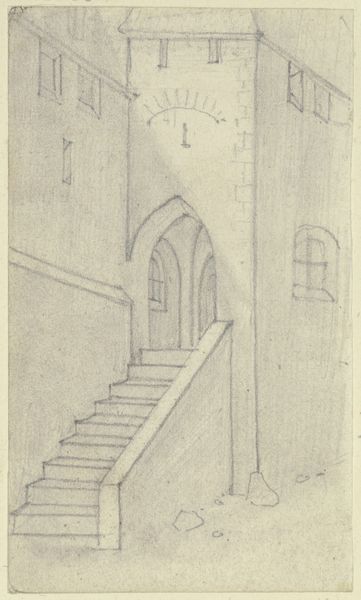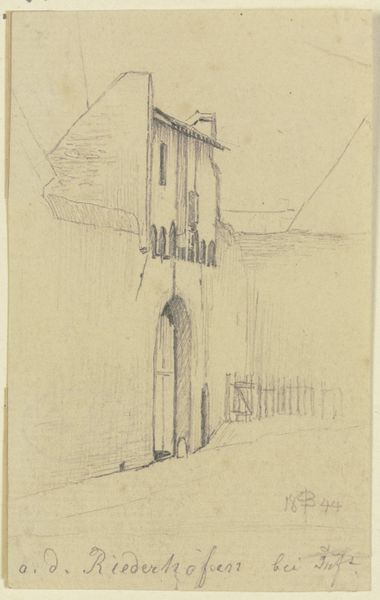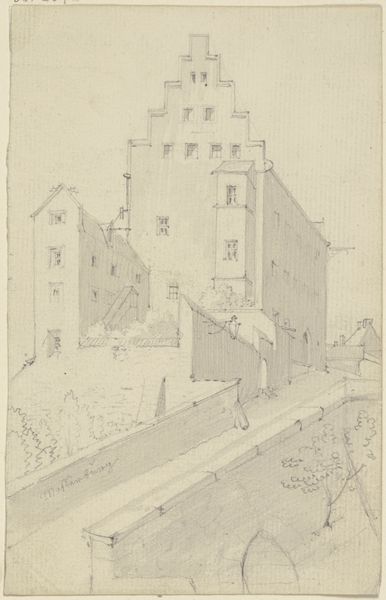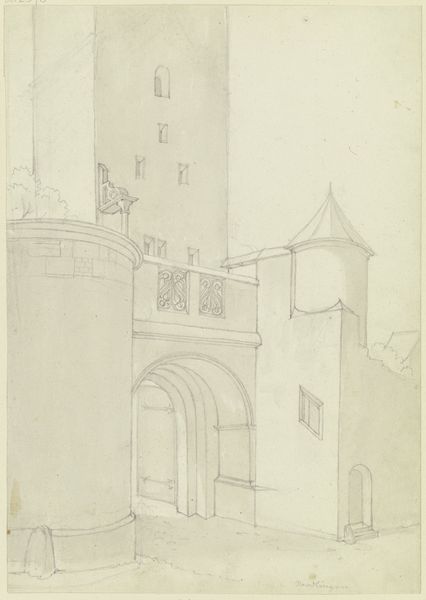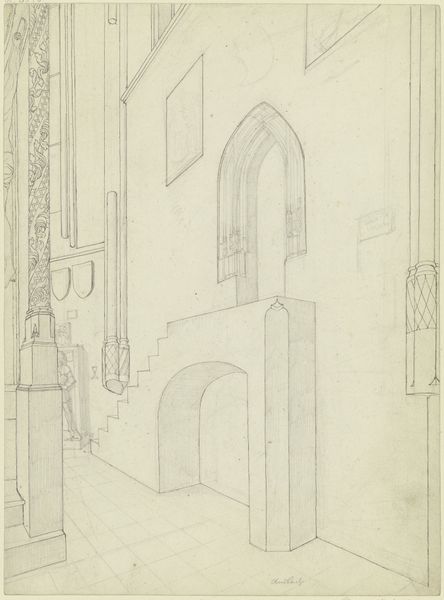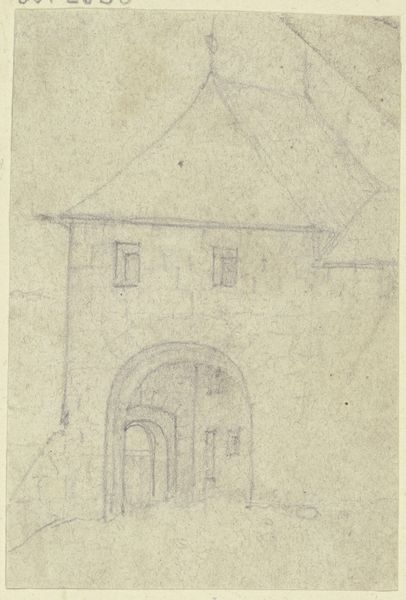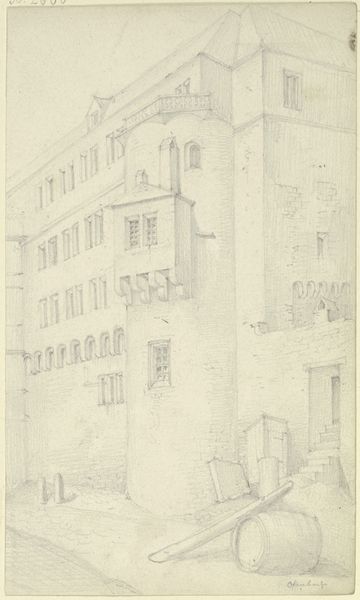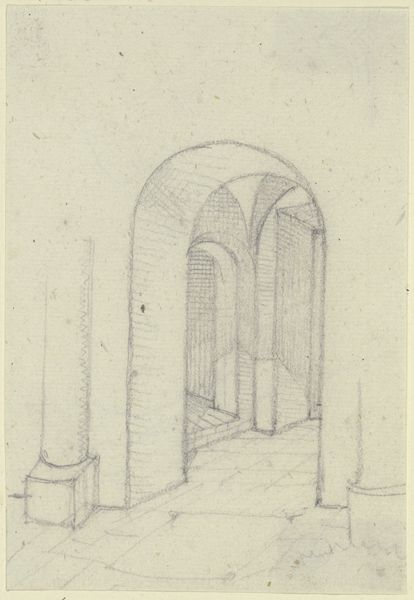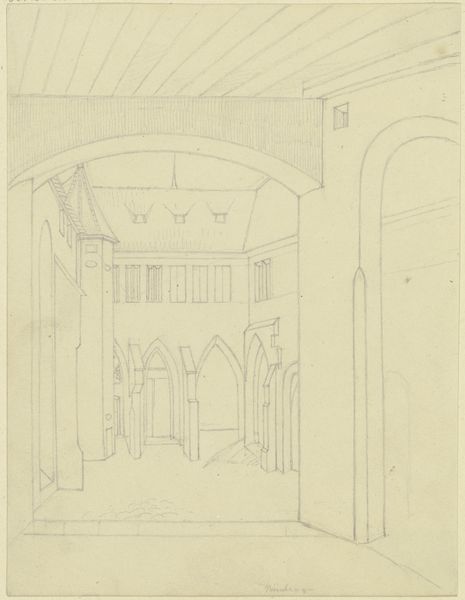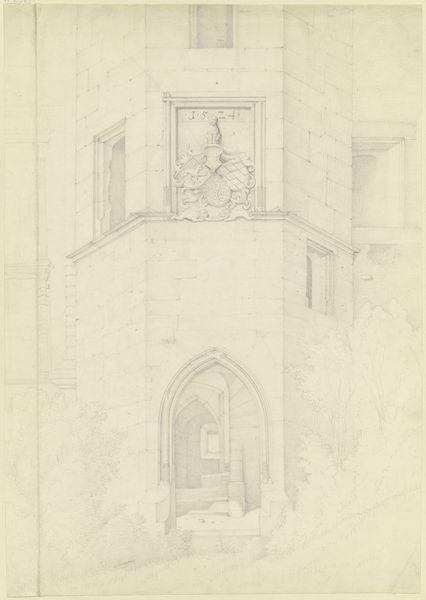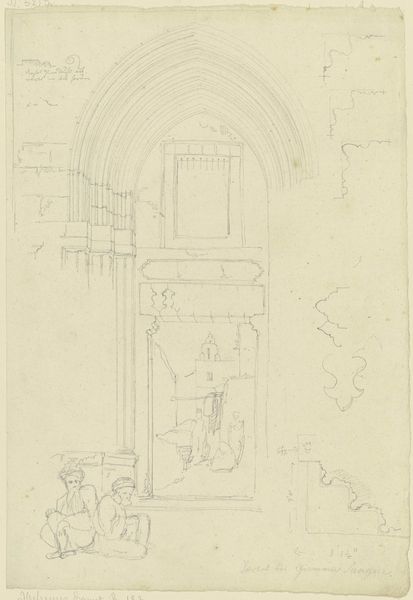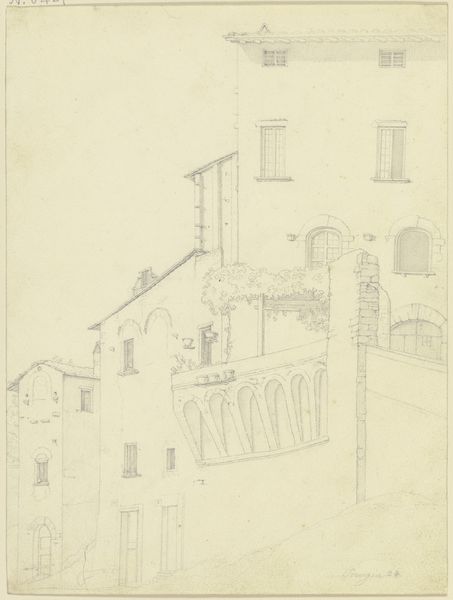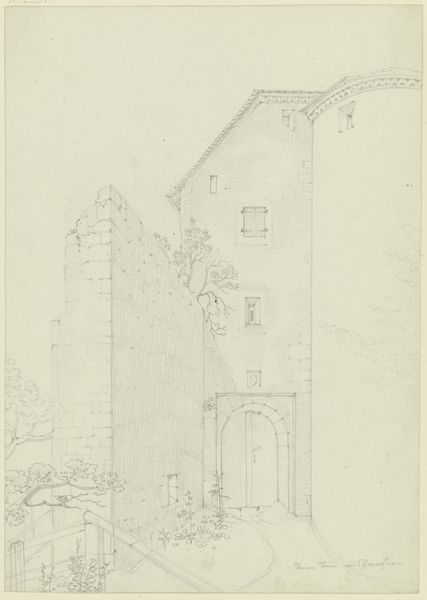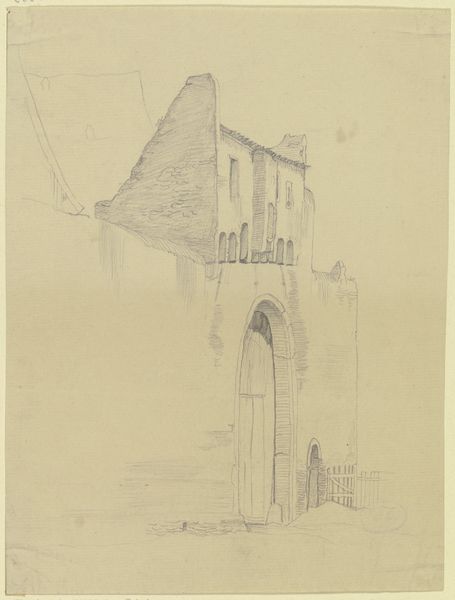
drawing, paper, architecture
#
drawing
#
landscape
#
paper
#
geometric
#
line
#
cityscape
#
architecture
#
realism
Copyright: Public Domain
Editor: Here we have Karl Ballenberger's "Barbican with bridge," a drawing on paper. It feels almost ethereal with its light lines, like a memory fading. What strikes me is how much detail is conveyed with such economy of means. What do you see in this piece? Curator: I'm drawn to the materiality of this drawing – the directness of the pencil on paper. Look closely at the different pressures and techniques he employs to describe the stone. Consider the social context; drawing was a readily available, inexpensive medium, a tool for observation and documentation. How does that impact our understanding of his artistic choices, compared to say, a large-scale oil painting? Editor: That’s a great point. Seeing it as a readily accessible tool changes my perspective. The fact that it's easily portable, means the artist could set up and quickly sketch this on location, and suggests it was maybe more of a study than a grand statement? Curator: Exactly! We should be questioning the notion of "high art" versus "low art" based on the materials used and the social conditions of its creation. Was this intended for a patron, or merely personal exploration? Knowing it resides in the Städel Museum now elevates its status, doesn’t it? How do labor and consumption influence our perception? Editor: It absolutely does. Thinking about the accessibility of drawing and its quickness also puts an emphasis on the artist's skill. This piece, in that light, says a lot about the value of craft. Curator: Precisely! It highlights the artistry inherent in skillful execution regardless of the medium. A crucial element for our current perception of art and its history! Editor: Thanks, I’ll definitely look at drawings differently now, with a sharper focus on the how and the why it was made!
Comments
No comments
Be the first to comment and join the conversation on the ultimate creative platform.
